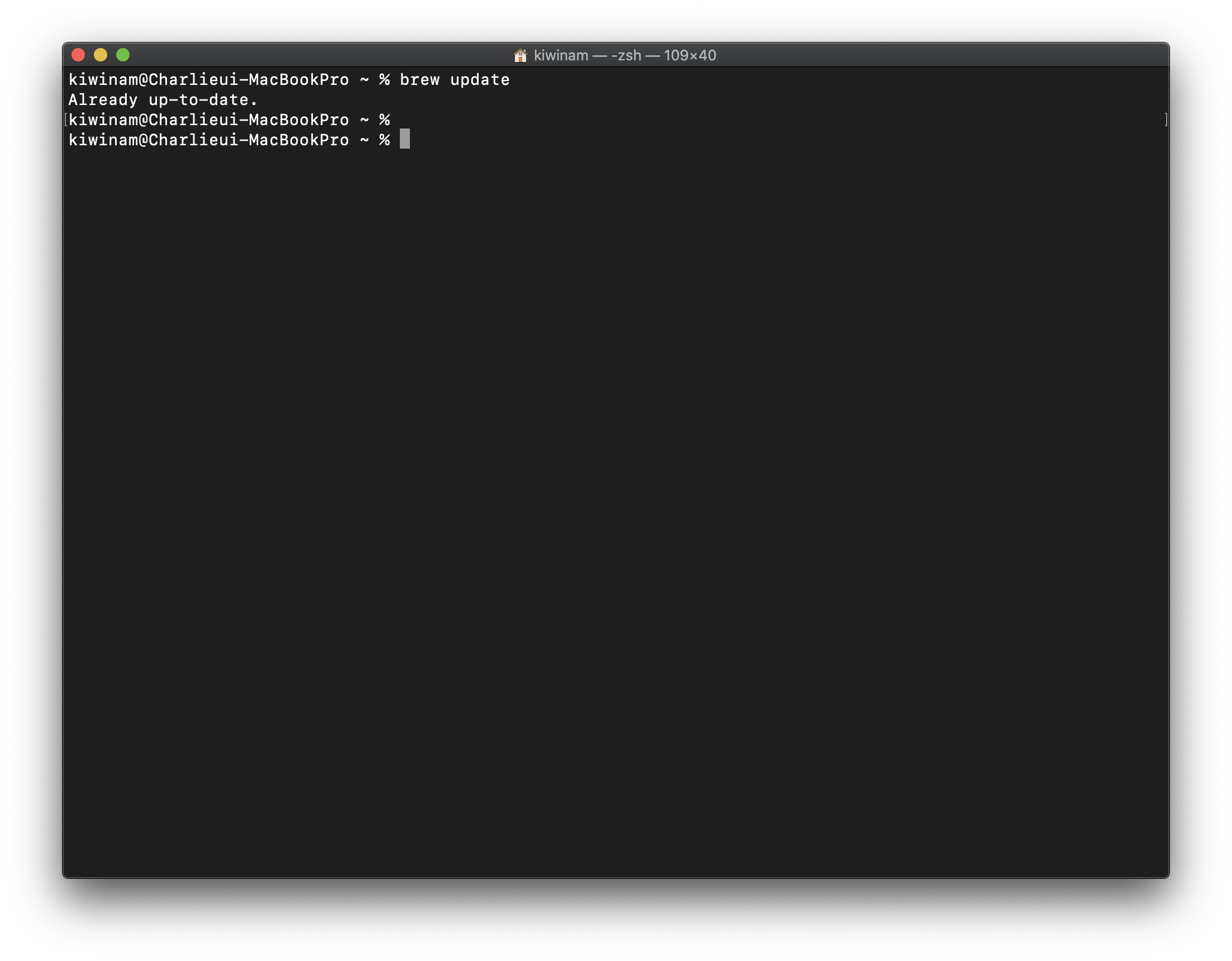

- #Mac brew update ruby how to
- #Mac brew update ruby mac os
- #Mac brew update ruby pdf
- #Mac brew update ruby archive
- #Mac brew update ruby code
In this post we learned how to install any version of Java on Mac using Homebrew. Then, you can use the aliases to switch between different Java versions: $ java8 bash_profile for the aliases to take effect: $ source ~/.bash_profile In this case, we want to be able to switch between Java8 and Java11: export JAVA_8_HOME=$(/usr/libexec/java_home -v1.8)Įxport JAVA_11_HOME=$(/usr/libexec/java_home -v11)Īlias java8='export JAVA_HOME=$JAVA_8_HOME'Īlias java11='export JAVA_HOME=$JAVA_11_HOME' If you want to switch between different versions of Java, you need to add the following to your. Switch Between Different Versions of Java To install previous or specific versions of JDKs, you can get them from AdoptOpenJDK: $ brew tap adoptopenjdk/openjdk Install Specific Versions of Java (Java8, Java11, Java13) To install the latest version of Java, all you need to do is: $ brew cask install java Install Latest Version of Java Using Brew Next, install Homebrew Cask $ brew tap homebrew/cask-versions If not, you can install it via: $ ruby -e "$(curl -fsSL )" Pre-requisitesīefore we start, make sure you have Homebrew installed on your Mac. In this article we show how to install Java on Mac using Homebrew, and how to allow to switch between different versions such as Java8, Java11, Java13 and latest Java version.

At least, this is the default organization.Ĭoncluding, I found the process quite straightforward, by the way I thought that enlisting the steps like in a tutorial might help some of the folks out there attempting the same installation.You can have multiple versions of Java on your Mac.
#Mac brew update ruby pdf
A window like the below one will be displayed, where the LaTeX project and its files can be controlled: on the leftmost side, the project structure is displayed, on the rightmost side, the PDF rendering is presented, and in the center your LaTeX code. To start writing your beautiful documents, you can use the previously installed TexMaker. Once completed, a display like the below one will be presented.
#Mac brew update ruby archive
Shipped with MacTex there is Tex Live Utility (an interactive UI application for managing LaTeX packages and their installation/update/removal), via TeX Live the installed packages need to be updated before to concretely start working with the brand new LaTeX platform: updates are pulled out from the CTAN (Comprehensive TeX Archive Network) archives/repositories, so whatever official installed package will be taken into consideration for update. Packages update is an important step to implement right after the installation. brew cask install mactex brew cask install texmaker I recently needed to do a small scripting job in Ruby, and to use the gems required I needed to be on the latest version of Ruby (2.4.1). The process is straightforward and hereafter it is reported. compiler plus packages) and the rich text editor comprehensive of all the editing features. Once installed Homebrew and Homebrew Cask, it is the time to move forward installing MacTeX and TexMaker, respectively the LaTeX compilation platform (i.e. usr/bin/ruby -e "$(curl -fsSL )" brew install caskroom/cask/brew-cask Hereafter, the installation process for Homebrew and Homebrew Cask. Unfortunately – again! – Homebrew is not enough to installing LaTeX on a Mac machine, Homebrew Cask is needed: it extends Homebrew just by adding 1 command which allows to a former ‘brew’ to reach 2593 Casks out there. If brew doctor still complains about uncommitted modifications, also run this command: cd ' (brew -repository)/Library' git clean -fd. However, the nature of the bug requires that you do the following: cd ' (brew -repository)' git reset -hard FETCHHEAD.

#Mac brew update ruby code
Homebrew is written in Ruby it provides an easy to use CLI (Command Line Interface) to deal with install/uninstall processes it is stable, and does its job reasonably well. This is caused by an old bug in in the update code that has long since been fixed. Ruby on Mac can also keep your development environment up to date every time you run it.
#Mac brew update ruby mac os
With a package manager, everything would be much easier, and maybe this post was not needed at all.Ī quite standard tool used on Mac OS machines to install packages is Homebrew. Ruby on Mac installs everything you need to get started right away. Mac OS is a BSD-based operating system which unfortunately does not have any official package manager tool, like ‘yum’ on RedHat or ‘apt’ on Ubuntu. And, as a first step I had to install it on my MacBook Pro, a supposedly easy and straightforward task for a Linux enthusiast, right? Well, yes and no, and let me argument why. Why? Simply, because I did not have any opportunity to do that again after my Academic studies and research.

It is a long time now that I have not touched any LaTeX.


 0 kommentar(er)
0 kommentar(er)
